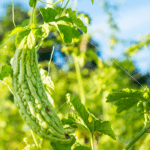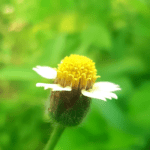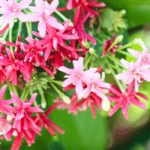Preventing and Treating Pomegranate Pests and Diseases in India: An Introduction
Pomegranates are one of the most popular fruit crops in India, known for their juicy and flavorful arils. Nonetheless, it’s worth noting that pomegranates, just like any other crop, can be adversely affected by pests and diseases that can hinder their growth and yield. In this comprehensive guide, we will discuss the various pests and diseases that commonly affect pomegranates in India and provide effective control methods.
Common Pests Affecting Pomegranates in India
Fruit Borer:
Fruit borer is a common pest that affects pomegranates in India, particularly during the fruiting season. The larvae of this pest bore into the fruit, causing it to rot and drop prematurely. To control fruit borer, farmers can spray the affected trees with insecticides containing Chlorpyrifos, Imidacloprid, or Spinosad.
Mealybugs:
Mealybugs are small, soft-bodied insects that suck sap from pomegranate leaves and fruit, causing them to wilt and deform. Farmers can control mealybugs by spraying the affected trees with insecticides containing Imidacloprid, Thiamethoxam, or Acetamiprid.
Thrips:
Thrips are tiny insects that feed on pomegranate flowers and fruit, causing them to become discolored and distorted. To control thrips, farmers can spray the affected trees with insecticides containing Imidacloprid, Thiacloprid, or Deltamethrin.
Whiteflies:
Whiteflies are small, sap-sucking insects that feed on pomegranate leaves, causing them to become yellow and drop prematurely. Farmers can control whiteflies by spraying the affected trees with insecticides containing Imidacloprid, Thiamethoxam, or Acetamiprid.
Aphids:
Aphids are small, pear-shaped insects that feed on pomegranate leaves and shoots, causing them to curl and deform. Farmers can control aphids by spraying the affected trees with insecticides containing Imidacloprid, Thiamethoxam, or Acetamiprid.
Common Diseases Affecting Pomegranates in India

Bacterial Blight:
Bacterial blight is a common disease that affects pomegranates in India, causing the leaves to wilt and the fruit to rot. Farmers can control bacterial blight by applying Copper Oxychloride, Copper Hydroxide, or Streptomycin Sulphate.
Crown Gall:
Crown gall is a bacterial disease that affects the roots and stem of pomegranate trees, causing them to become swollen and distorted. Farmers can control crown gall by pruning infected branches and applying Galltrol or agrobacterium Radiobacter.
Fruit Rot:
Fruit rot is a fungal disease that affects pomegranate fruit, causing them to become soft and discolored. Farmers can control fruit rot by adopting several preventive measures. First, it is important to ensure good orchard hygiene by removing fallen fruit and plant debris regularly. This helps to minimize the spread of fungal spores. Additionally, farmers should provide adequate spacing between trees to promote air circulation and reduce humidity, as high humidity favors the development of fruit rot.
Fungicide sprays are also an effective method to control fruit rot. Farmers can apply fungicides such as thiophanate-methyl, azoxystrobin, or tebuconazole at the recommended dosage and frequency. It is crucial to follow the instructions provided by the manufacturer and adhere to the pre-harvest interval (PHI) to ensure food safety.
Powdery Mildew:
Powdery mildew is a fungal disease that appears as white powdery patches on pomegranate leaves and fruit. It can lead to leaf drop and reduced fruit quality. To control powdery mildew, farmers can spray the affected trees with fungicides containing Sulfur, Triadimefon, or Myclobutanil.
Leaf Spot:
Leaf spot is a fungal disease characterized by the appearance of circular, dark-colored lesions on pomegranate leaves. It can cause defoliation and weaken the tree. Farmers can control leaf spot by applying fungicides containing Copper Oxychloride, Mancozeb, or Propiconazole.
Effective Control Measures for Pomegranate Pests and Diseases in India
Cultural Control:
To ensure optimal growth and yield of pomegranates, it is important to implement effective cultural control practices that can help minimize the incidence of pests and diseases. Regular pruning is a key aspect of cultural control as it helps maintain good canopy structure and promote air circulation. Additionally, proper irrigation management is vital to avoid water stress, which can weaken the trees and make them more vulnerable to pest and disease attacks. Furthermore, timely removal of fallen fruit and plant debris is crucial to minimizing pest and disease buildup.
It is also important to note that sanitizing pruning tools and equipment can prevent the spread of diseases. By implementing these cultural control practices, pomegranate growers can proactively minimize pest and disease incidences, ensuring healthy growth and a bountiful yield.
Chemical Control:
Chemical control measures can be used when cultural control practices are not enough. Farmers should use registered pesticides and follow label instructions for correct dosage and application methods. Integrated Pest Management (IPM) strategies should be adopted to minimize chemical inputs and preserve beneficial organisms.
Insecticides:
Insecticides can effectively control pests such as fruit borers, mealybugs, thrips, whiteflies, and aphids.
For fruit borers, spray 25 ml of Emamectin benzoate or Spinosad per 10 liters of water at an interval of 10-15 days during the fruiting season.
Mealybugs, spray 2.5-5 ml of Imidacloprid per liter of water during the vegetative and fruiting stages.
Thrips, spray 1 ml of abamectin per liter of water during the fruiting stage.
Whiteflies, spray 2 ml of Thiamethoxam per liter of water at a 10-15 day interval during the fruiting season.
Aphids, spray 1-1.5 ml of Imidacloprid per liter of water during the fruiting stage.
Fungicides:
Fungicides are crucial in managing fungal diseases like Bacterial Blight, Crown Gall, Fruit Rot, Powdery Mildew, and Leaf Spot.
- For bacterial blight, spray 2.5-3 g of Streptomycin Sulfate or Copper Oxychloride per liter of water at an interval of 10-15 days.
- For crown gall, drench the soil with 1-1.5 g of Galltrol A or B per liter of water during the vegetative stage.
- For fruit rot, spray 2.5-3 ml of Carbendazim or Thiophanate Methyl per liter of water at an interval of 10-15 days.
- For Powdery Mildew, spray 2.5-3 g of Sulfur or 2-2.5 ml of Triadimefon per liter of water during the vegetative and fruiting stages.
- For leaf spot, spray 3 g of Copper Oxychloride or 1-1.5 ml of Propiconazole per liter of water at a 10-15 day interval.
Biological Control:
Beneficial insects, such as Ladybugs, Lacewings, and Parasitic Wasps, can be introduced to control pests naturally. Trichoderma and Bacillus-based Biopesticides are also available for managing fungal diseases. To use Trichoderma, mix 10 g of the product in 1 liter of water and apply to the soil around the tree during the vegetative stage. For Bacillus-Based Biopesticides, spray 2-3 ml per liter of water at an interval of 10-15 days during the vegetative and fruiting stages.
Conclusion:
Summary of Key Points:
In this comprehensive guide, we have discussed the common pests and diseases that affect pomegranates in India. We have highlighted effective control measures, including cultural, chemical, and biological methods, to minimize their impact on pomegranate cultivation.
Final Thoughts:
Pomegranate cultivation in India can be successful and rewarding with proper pest and disease management practices in place. By adopting integrated pest management strategies, farmers can protect their pomegranate orchards from pests and diseases, ensuring healthy growth and abundant yields.
Encouragement to Try Growing Pomegranates in India:
We encourage farmers and enthusiasts to explore the cultivation of pomegranates in India. With the right knowledge, skills, and resources, pomegranate cultivation can be a lucrative venture. Pomegranates are known to be hardy and adaptable to a wide range of climatic conditions, making them suitable for cultivation in different parts of India.
Additionally, pomegranate cultivation can provide numerous benefits, such as a high yield per acre, a long harvesting season, and a high market value for the fruit. Pomegranates are also rich in antioxidants and have numerous health benefits, making them a popular fruit in both domestic and international markets.
To get started with pomegranate cultivation, farmers should research and identify the suitable varieties for their region, obtain quality seeds or saplings, and prepare the soil and land properly. They should also invest in proper irrigation systems and implement pest and disease management strategies to ensure healthy plant growth and high fruit yield.
Overall, pomegranate cultivation can be a profitable and rewarding venture for farmers in India. With the right knowledge and resources, farmers can cultivate this fruit successfully and contribute to the growth of the agriculture sector in India.
Shehri Kisaan: Your Partner in Success for Indian Agriculture and Gardening
For a comprehensive and detailed resource specifically addressing the various diseases, pests, and other problems in pomegranate plants and trees, we recommend visiting www.shehrikisaan.in. This website provides valuable information collected through practical meetings with experienced growers and farmers, who have shared their practical experiences with different brands and technicals.
At www.shehrikisaan.com, you will find in-depth knowledge on this subject, including specific pest and disease management strategies, recommended chemical formulations, and effective control measures. The information gathered from real-world experiences will help you navigate the challenges associated with pomegranate cultivation and make informed decisions to protect your crop.
Whether you are a seasoned farmer or an enthusiastic beginner, www.shehrikisaan.com offers a wealth of information to assist you in identifying, preventing, and managing diseases, pests, and other problems that can affect pomegranate plants. Make sure to visit the website to gain valuable insights and enhance your understanding of pomegranate cultivation.
Please note that the information provided on www.shehrikisaan.com is constantly updated and refined based on the latest research and field experiences. It serves as a reliable and practical resource to support your efforts in achieving successful pomegranate cultivation.







